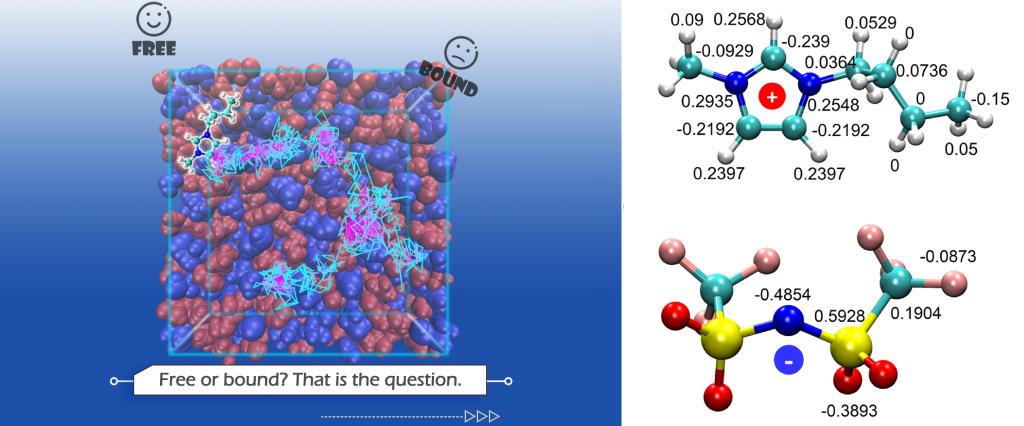Using molecular dynamics simulations and theoretical analysis of velocity-autocorrelation functions, we study ion transport mechanisms in typical room-temperature ionic liquids. We show that ions may reside in two states: free and bound with an interstate exchange. We investigate quantitatively the exchange process and reveal new qualitative features of this process. To this end, we propose a dynamic criterion for free and bound ions based on the ion trajectory density and demonstrate that this criterion is consistent with a static one based on interionic distances. Analyzing the trajectories of individual cations and anions, we estimate the time that ions spend in bound “clustered states” and when they move quasifreely. Using this method, we evaluate the average portion of “free” ions as approximately 15%–25%, increasing with temperature in the range of 300–600 K. The ion diffusion coefficients and conductivities as a function of the temperature calculated from the velocity and electrical-current autocorrelation functions reproduce the reported experimental data very well. The experimental data for the direct-current conductivity (constant ionic current) is in good agreement with theoretical predictions of the Nernst-Einstein equation based on the concentrations and diffusion coefficients of free ions obtained in our simulations. In analogy with electronic semiconductors, we scrutinize an “ionic semiconductor” model for ionic liquids, with valence and conduction “bands” for ions separated by an energy gap. The obtained band gap for the ionic liquid is small, around 26 meV, allowing for easy interchange between the two dynamic states. Moreover, we discuss the underscreening paradox in the context of the amount of free charge carriers, showing that the obtained results do not yet approve its simplistic resolution.

All the details of our work can be read in our article in PRX:https://link.aps.org/doi/10.1103/PhysRevX.9.021024